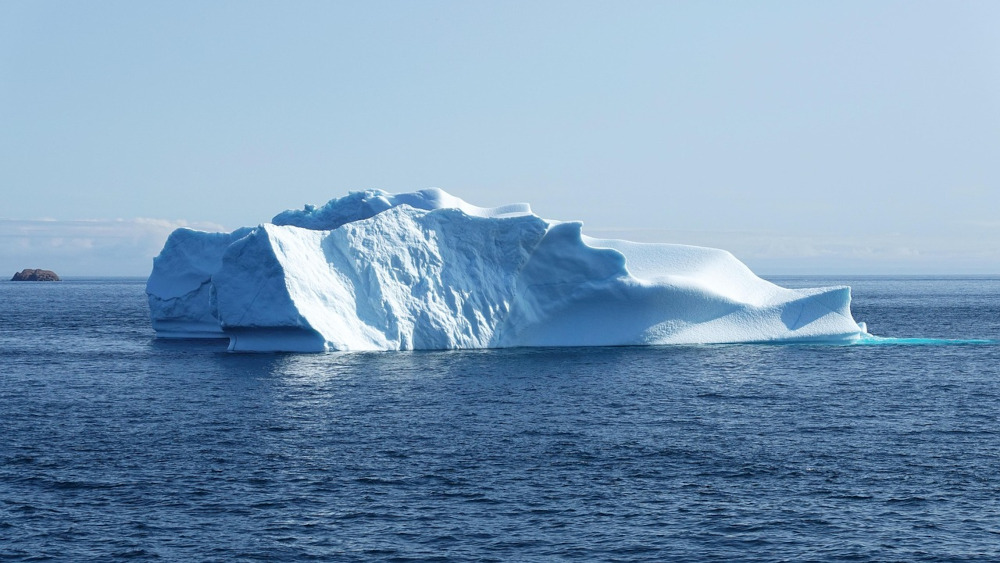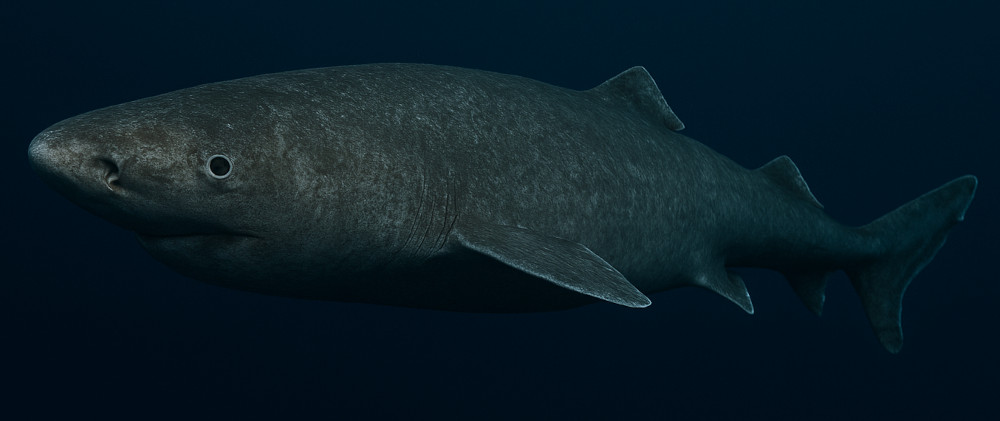Guide
The Greenland shark – This is why the giant can live up to 500 years
Deep down in the dark, cold waters of the North Atlantic lives one of the most enigmatic and fascinating animals on our planet: the Greenland shark. When you think of sharks, you might immediately visualise a fast, aggressive predator – but the Greenland shark is very different. It moves slowly, lives in icy depths and lives longer than any other known vertebrate on our planet. The Inuit call the Greenland shark ‘eqalussuaq’, which means shark or big fish in Greenlandic. Due to its leisurely movements, it is also known as the ‘sleepy shark’. Its habitat extends around Greenland and Iceland, making it the northernmost region where sharks can be found. In this blog article, I will take you into the mysterious world of the Greenland shark and show you why this animal is so unique.

A life in hiding: Where does the Greenland shark live?
The Greenland shark (scientific name Somniosus microcephalus) is a true inhabitant of the deep sea. It is mainly found in the cold waters around Greenland, Iceland and northern Canada, but has also been sighted in Norway and Scotland. It is usually found at depths of between 200 and 600 metres, occasionally even at depths of over 1000 metres.
In these dark, almost motionless layers of water, life is calm and constant – exactly the right conditions for this slow giant. The low temperatures and constant environment could be one reason for its astonishing longevity, as cold water slows down metabolic processes considerably.
What does the Greenland shark look like?
At first glance, the Greenland shark may not look particularly impressive: it is dark grey to brown, has rough, slimy skin and no spectacular patterns or colours. But it can grow up to seven metres long and weighs over 1000 kilograms – making it one of the largest shark species in the world.

Its eyes are relatively small, often cloudy or even infested with parasites, which indicates that it does not primarily rely on its eyesight when hunting. Instead, it probably uses its sense of smell and movement sensors to orientate itself – and does so with impressive effectiveness.
A slow hunter with a big appetite
The Greenland shark is not a fast swimmer. With an average speed of just 0.3 metres per second, it is considered the slowest shark in the world. Nevertheless, it is one of the top predators in its environment. Its hunting behaviour has hardly been researched, but it is assumed that it mainly feeds on fish, squid, crabs and occasionally also on larger animals such as seals or even reindeer carcasses.
It has even been documented that the remains of polar bears have been found in the stomachs of dead Greenland sharks. How such a slow animal gets such large prey remains a mystery – presumably it uses its ability to approach almost silently and inconspicuously to surprise sick or sleeping animals.
The amazing age: How old does a Greenland shark get?
One of the most fascinating characteristics of the Greenland shark is its extreme lifespan. For a long time, little was known about this until an international team of researchers shed light on it in 2016 with the help of radiocarbon dating of eye lenses. They discovered that Greenland sharks live to be 272 years old on average – with a range of 250 to over 500 years. The oldest shark ever studied was estimated to be around 392 years old – with a possible inaccuracy of ±120 years.
This makes the Greenland shark the oldest known vertebrate on earth. By comparison, turtles, whales and elephants look almost like teenagers. Scientists suspect that the slow development of the Greenland shark – it only reaches sexual maturity at around 150 years of age – is a key to its extraordinary longevity.
The reasons for the extreme age of the Greenland shark are not yet fully understood, but there are some interesting hypotheses. One of the most important is the extremely slow metabolism, which is favoured by the cold temperatures. A slow metabolism means less cell division, less wear and tear and less risk of diseases such as cancer.
Another factor could be its remote habitat. In the dark depths of the sea, there are fewer predators, less competition and fewer environmental changes. The Greenland shark lives in a stable world – in stark contrast to the hectic, fast-moving coastal regions.
Greenland sharks are also very frugal. They can go for months without food and seem to have a certain resistance to toxins and parasites. Even when their eyes are infested with parasites, they can still find their prey – which speaks in favour of their great adaptability.
Reproduction and offspring
Little is known about the reproductive behaviour of the Greenland shark. The animals are extremely difficult to observe as they live at great depths and are very rarely caught. However, it is assumed that the females could have a gestation period of several years – similar to other deep-sea sharks.
Greenland sharks give birth to live young that are already around 40 centimetres long at birth. It is unclear how many young a female gives birth to. Due to late sexual maturity, the reproductive cycle is very slow – which makes the species particularly vulnerable to overfishing.
The Greenland shark and humans
Although the Greenland shark is so mysterious and ancient, it has not remained untouched by man. In the past, it was hunted intensively for its liver, from which oil was extracted. Today, fishing is largely prohibited or severely restricted, but many animals still end up in nets due to bycatch in fishing.
The meat of the Greenland shark is also poisonous to humans as it contains trimethylamine oxide – a substance that can lead to paralysis or hallucinations in large quantities. In Iceland, however, the meat is traditionally fermented and eaten as ‘hákarl’ – a dish that represents a culinary test of courage for many travellers.
Conclusion – A majestic mystery of the deep sea
The Greenland shark is a fascinating creature that shows us how diverse and mysterious life in the oceans can be. Its enormous lifespan, its adaptation to the cold and darkness and its role as a silent hunter make it a true wonder of nature.
Next time you think of sharks, imagine not only the swift great white shark, but also the leisurely, ancient Greenland shark that has been gliding through the depths of the North Atlantic for centuries – a silent witness of time that teaches us humility before that which we do not yet understand.
- Triops longicaudatus – Did you know THAT about the American crayfish? - 23. April 2025
- Synapsids: Do you know the forgotten rulers of the Permian period? - 21. April 2025
- Happy Easter! - 20. April 2025